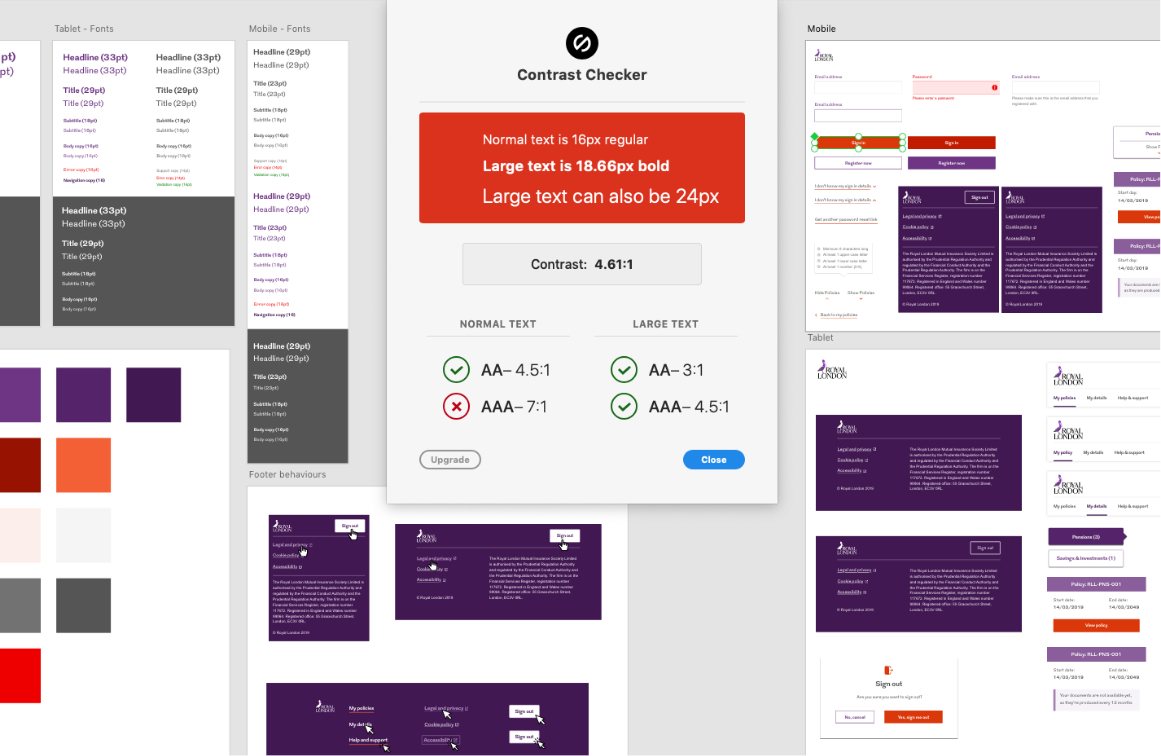Royal London
(Product design)
PROJECT OVERVIEW
Royal London Legacy Division wanted to build a portal for pension customers to improve engagement and retention and reduce the amount of paper-based communication. They wanted to bring a strong digital presence to a traditionally analogue branch of the business, ensuring it remains competitive and customer focused.
MY CONTRIBUTION
I was a part of a small agile team and worked collaboratively with a fellow UX designer, product owner and development team. I took part in all aspects of the product lifecycle, but focused mostly on research and discovery, creating user journeys and interface design. I run multiple workshops and presented work frequently to the wider business.
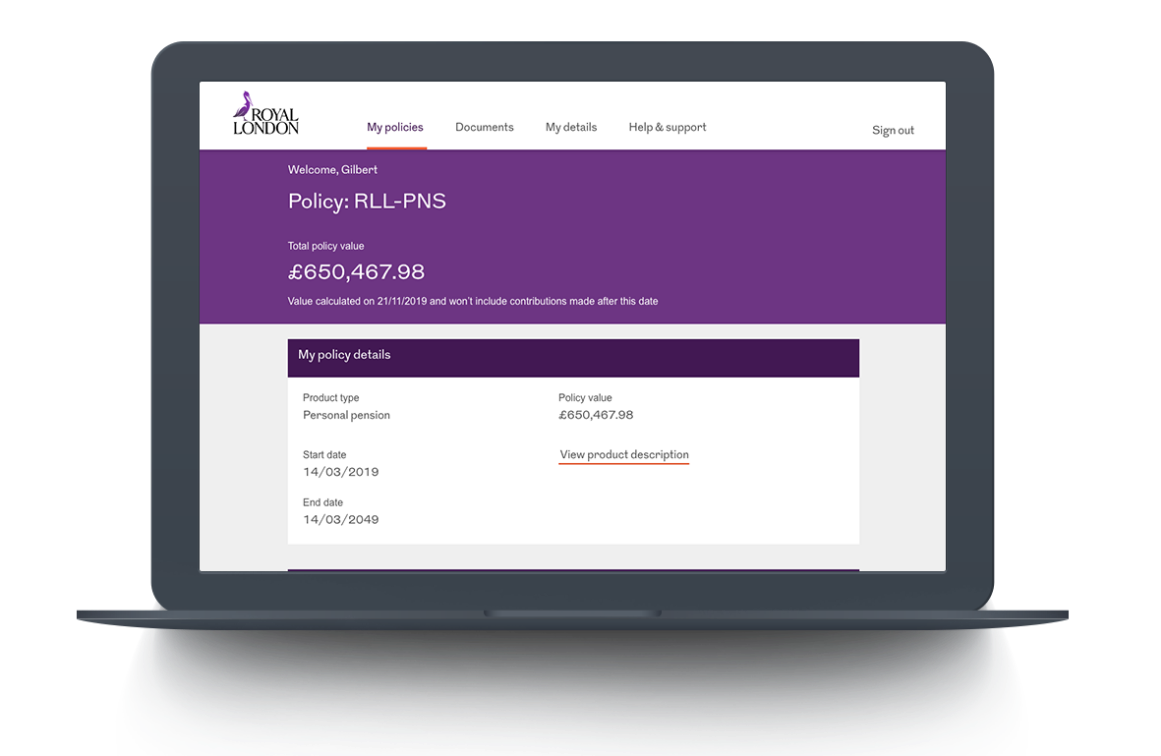
Project goals
Provide customers with the tools they need to manage their financials
Provide better level and range of services to long-term customers
Reduce environmental impact by actively encouraging customers to go paperless
Establish a strong digital presence to remain competitive in the pensions sector
Agile kick-off
This was the first agile project within the division, so we started by taking a 2 day agile methodology workshop together. This allowed us to bond and make sure everyone was on the same page. We then discussed the vision for the project, agreed success criteria and roles and responsibilities within the team.
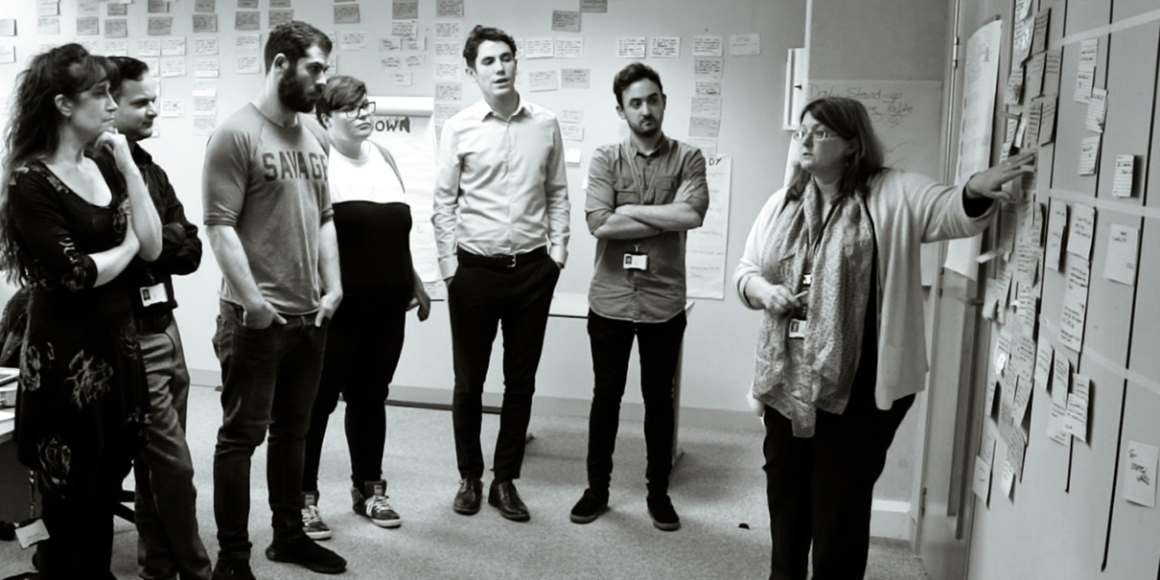
Research methods
Competitors analysis
We conducted extensive desk research of the market leaders and the level of service they provide. We frequently benchmarked our solutions against that to ensure our product was competitive.
Guerilla research
We run a series of quick interviews to establish how people interact with their current pension providers. We focused on pain points, functionality expectations, security, level of support needed and understanding of information available.
Journey mapping
We gathered the scenarios, actions and expectations and created a flow of how the customers would flow in, through and out. This allowed us to identify opportunities and narrow our focus down into the few key epics.
Prototype testing
In the product lifecycle we conducted numerous informal prototype testing and two formal usability labs. The participants profile matched that of an average Royal London customer and allowed us to refine and reiterate our designs.
What did the customers want?
To see value, growth and projections of their pensions
Self-service options to view and change their contact details
Easy access to human support including free financial advice
Less jargon, clear, plain language to explain the processes and products
Good level of online security
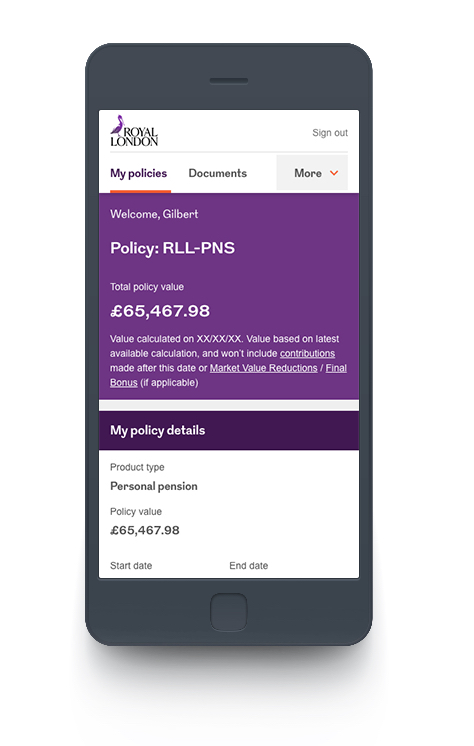
Showing values and predictions
We wanted to provide maximum value to the customers but we were also restricted by old systems and limitations of legacy data. We started by showing the policy value and our solution had to be flexible to accommodate future phases of the project.
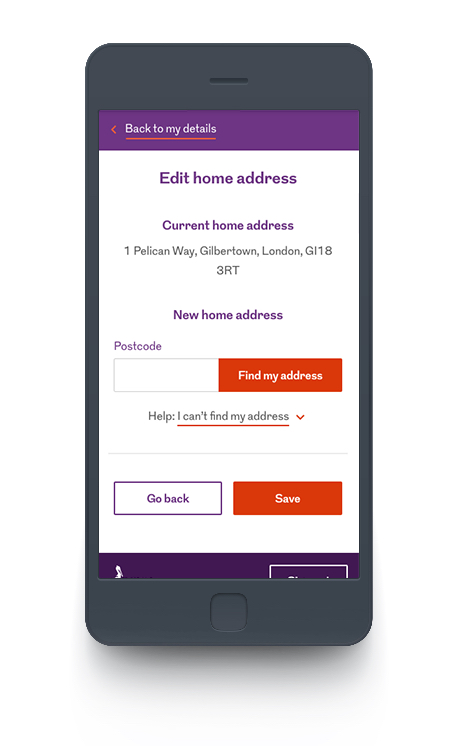
Self-service changes
Change of contact details is one of the most frequently carried out transaction and our solution allowed the customer to make basic updates without the need to contact the customer service centre. It was also beneficial to the business reducing the need of phone support and improving service levels.
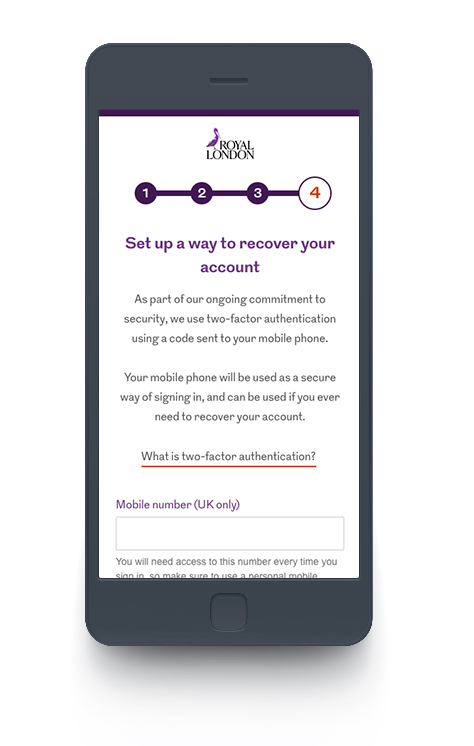
Online security
We’ve introduced a 2-factor authentication mechanics. We knew that our audience was older and less tech savvy so we ensured to use plain, supportive language to explain the process and verified the usability of the journey during the labs.
Accessible for all
As a financial institution, Royal London has an obligation to ensure that their products are fair and accessible. Our solution had to not only be aesthetically pleasing, on-brand and functional, but also meet the WCAG 2.0 standards. We paid close attention to font sizes, colour contrasts and the site structure. We used plain English across all the copy.
Flexible and set up for growth
With a goal of a MVP and iterative design, we had to ensure our designs were flexible. This way we would minimise the effort needed to implement future iterations. When creating the UI I used the atomic design principles, working from smallest components – up, guaranteeing consistency and easy implementation.

SEE NEXT
